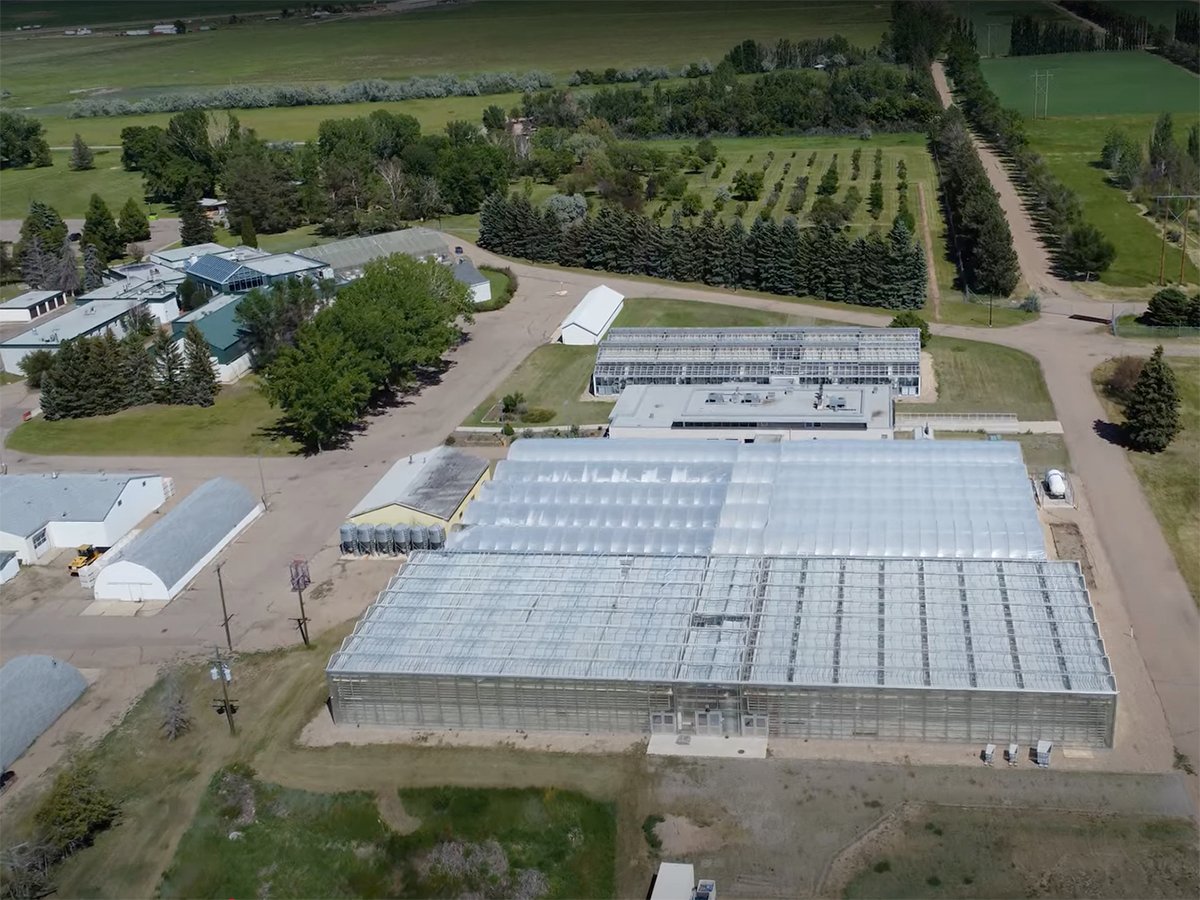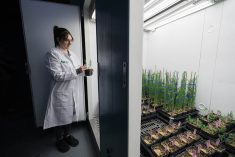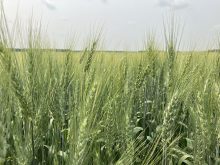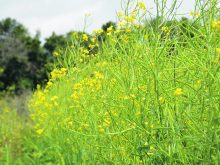Researchers gain a better understanding of how plants recognize peptides that caterpillars produce while feeding
Plants have inherited certain receptors that can recognize pathogens and diseases, which then triggers immune responses. But understanding how plants evolved that ability has been limited.
Now scientists at the University of Washington are exploring key evolutionary events that enabled plants to develop responses to common threats.
The research focused on the caterpillar. Researchers knew that some legumes such as mung beans and black-eyed peas could respond to the peptides produced from the mouths of caterpillars when they ate plant leaves.
Researchers looked at the genomes in this group of plants to see if a common pattern recognition receptor called the Inceptin receptor had changed over millions of years, gaining or losing the ability to recognize caterpillars.
Read Also

Alberta crop diversification centres receive funding
$5.2 million of provincial funding pumped into crop diversity research centres
They found that a single 28-million-year-old receptor gene corresponded perfectly with the plant’s immune response to caterpillar peptides. They also found that some of the descendants of the oldest plant ancestors had lost the gene and could not respond to the destructive nature of the insect.
One of those plants is soybeans, which lost the protective gene over time.
Simon Snoeck, postdoctoral researcher in the Department of Biology at the University of Washington, said the discovery of an immunity receptor in cowpea created an opportunity to focus research on legumes.
He said that comparative genomic studies have previously shown that parts of the plant genome containing immunity receptors are known to be variable between and even within species. The team was not surprised, therefore, that some species had lost the protective gene.
“At the moment, we do not know why the ancestors of those plants that lost the protective gene were not disfavoured by natural selection,” he said. “We can only hypothesize that this gene got lost in a plant habitat where no, or low, selection pressure was present, or caterpillars were not strongly present and had minimal influence on the survival and propagation of the plant.”
He said that if the plant species thrived in an environment where interaction with caterpillars occurred, one would expect a selective advantage for those species that still have the receptor.
The team used a technique called ancestral sequence reconstruction in which they combined information from all modern-day receptor genes to predict the 28-million-year-old original sequence. The ancestral receptor could respond to caterpillar peptides but a slightly older version with 16 changes in the receptor sequence could not.
“By using this bioinformatic approach called ancestral sequence reconstruction (ASR), researchers are able to predict the ancient protein sequences on the basis of surviving ones,” he said.
“We were able to pinpoint 16 amino acids in 720 amino acids as these 16 were the only difference between a functional and a non-functional ancestral receptor. We can only speculate about the event that led to the loss of the receptor in the ancestor of soybean.”
The news release stated that this genetic history, together with computer models suggested there was a key insertion of a new gene into the ancestral plant’s genome more than 32 million years ago, followed by rapid evolution of diverse forms of the new receptor.
One of those forms acquired the ability to respond to caterpillar peptides and that capability is now shared in dozens of modern-day legume species.
“We found modern versions of the Inceptin receptor in a multitude of legume species,” he said. “All of them are part of the phaseoloids.”
He said well-known species or crops that have a functional version of the receptor include common beans, cowpeas, and pigeon peas.
The plant group phaseoleae is one of the subdivisions of the legume subfamily Faboideae. The group includes many of the commercial beans.
Whether this ancient gene provides protection against other insects is still an unknown. The production of the ligand (a digestive fragment of a plant protein) that triggers the receptor has only been reported for oral secretions of multiple caterpillars.
“Further research should investigate if the ligand is also formed in the oral secretion of other insect pests which are detrimental in the field,” he said. “If so, this trait might even be of bigger importance for the agricultural sector as it might protect against more pests than just caterpillars.”
With the identification of the emergence and loss of a key immunity trait over the course of plant evolution, future genomic studies may potentially lead to more valuable attributes.
“In the future we hope to learn more about genome-level processes that generate new receptor diversity and identify as-yet unknown immune receptors within plant groups,” said Adam Steinbrenner, assistant professor in the department of biology. “As increasing genomic data becomes available, such approaches will identify missing receptors that are useful traits to reintroduce into plants to help protect crops.”
The team is exploring options to reintroduce the gene back into soybeans. Snoeck said that genomic data of multiple soybean accessions shows that none contain the inceptin receptor. Genetic engineering will be the most straightforward approach to augment immunity of soybean against caterpillars.
“We are interested in both the potential agricultural value of this trait as well as more fundamental questions such as which parts of the receptor interact with the ligand, which parts are essential to activate the signaling cascade in the plant after initial recognition of the ligand, etc.,” he said.
Future testing will include field tests in collaboration with crop farmers.
The research was published in the journal eLife.















